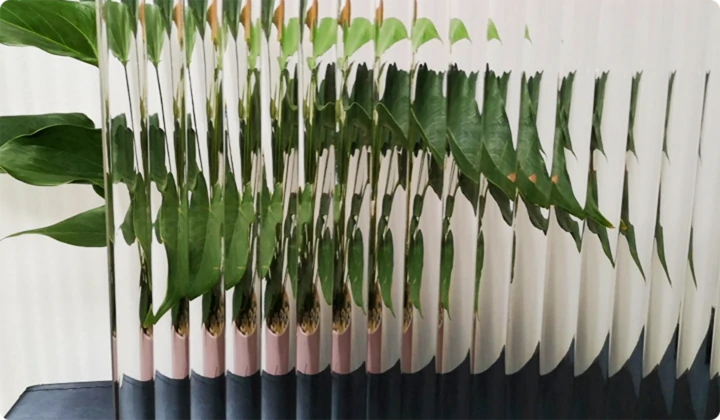Designing Toughened Glass Innovations and Applications
Toughened glass, also known as tempered glass, is a type of safety glass that has been treated by a process of extreme heating and cooling to increase its strength compared to normal glass. The design and engineering of toughened glass have advanced significantly over the years, leading to diverse applications in various industries, including architecture, automotive, and electronics. This article explores the innovations, processes, applications, and future trends in the design of toughened glass.
The primary process in the design of toughened glass involves heating the glass to over 600 degrees Celsius and then rapidly cooling it. This thermal treatment creates internal stresses that enhance the glass's strength, making it up to five times stronger than standard glass. When broken, toughened glass shatters into small, blunt pieces rather than sharp shards, significantly reducing the risk of injury. This safety feature is paramount in urban environments, where glass is commonly used in facades, balustrades, and windows.
Designing Toughened Glass Innovations and Applications
Toughened glass is not limited to architectural use; its applications extend to the automotive industry, where it is increasingly used in car windows and sunroofs. Automotive designers favor toughened glass for its lightweight properties and resistance to impact, which contribute to the overall safety and performance of vehicles. The integration of toughened glass in car interiors not only enhances passenger safety but also improves the aesthetic appeal of modern vehicles.
design toughened glass
In the electronics sector, toughened glass is employed in the production of screens for smartphones, tablets, and televisions. The demand for durable and scratch-resistant screens has led to innovations like Gorilla Glass, a type of chemically strengthened glass that combines toughness with clarity. Manufacturers continue to invest in research to create even more resilient glass, meeting consumer expectations for devices that can withstand everyday wear and tear.
Looking forward, the future of toughened glass design is bright, particularly with the integration of smart technologies. Researchers are exploring ways to incorporate features such as self-cleaning surfaces and energy-efficient coatings into toughened glass products. These innovations not only enhance the functionality of the glass but also align with sustainability goals by reducing the need for maintenance and energy consumption.
Moreover, the fusion of toughened glass with other materials, like metal and wood, is gaining traction. Hybrid designs can create striking visual effects while maintaining the structural integrity provided by toughened glass. This trend is particularly evident in modern homes and commercial spaces, where glass walls and partitions create open, airy environments while ensuring safety and durability.
In conclusion, the design of toughened glass is an ever-evolving field driven by technological advancements and changing consumer needs. From enhancing safety in construction and automotive applications to revolutionizing electronics with durable screens, toughened glass continues to play a pivotal role in various industries. With ongoing innovations and a focus on sustainability, the future of toughened glass design promises to be as exciting as its past, continuously pushing the boundaries of what is possible with this versatile material.
 Afrikaans
Afrikaans  Albanian
Albanian  Amharic
Amharic  Arabic
Arabic  Armenian
Armenian  Azerbaijani
Azerbaijani  Basque
Basque  Belarusian
Belarusian  Bengali
Bengali  Bosnian
Bosnian  Bulgarian
Bulgarian  Catalan
Catalan  Cebuano
Cebuano  Corsican
Corsican  Croatian
Croatian  Czech
Czech  Danish
Danish  Dutch
Dutch  English
English  Esperanto
Esperanto  Estonian
Estonian  Finnish
Finnish  French
French  Frisian
Frisian  Galician
Galician  Georgian
Georgian  German
German  Greek
Greek  Gujarati
Gujarati  Haitian Creole
Haitian Creole  hausa
hausa  hawaiian
hawaiian  Hebrew
Hebrew  Hindi
Hindi  Miao
Miao  Hungarian
Hungarian  Icelandic
Icelandic  igbo
igbo  Indonesian
Indonesian  irish
irish  Italian
Italian  Japanese
Japanese  Javanese
Javanese  Kannada
Kannada  kazakh
kazakh  Khmer
Khmer  Rwandese
Rwandese  Korean
Korean  Kurdish
Kurdish  Kyrgyz
Kyrgyz  Lao
Lao  Latin
Latin  Latvian
Latvian  Lithuanian
Lithuanian  Luxembourgish
Luxembourgish  Macedonian
Macedonian  Malgashi
Malgashi  Malay
Malay  Malayalam
Malayalam  Maltese
Maltese  Maori
Maori  Marathi
Marathi  Mongolian
Mongolian  Myanmar
Myanmar  Nepali
Nepali  Norwegian
Norwegian  Norwegian
Norwegian  Occitan
Occitan  Pashto
Pashto  Persian
Persian  Polish
Polish  Portuguese
Portuguese  Punjabi
Punjabi  Romanian
Romanian  Russian
Russian  Samoan
Samoan  Scottish Gaelic
Scottish Gaelic  Serbian
Serbian  Sesotho
Sesotho  Shona
Shona  Sindhi
Sindhi  Sinhala
Sinhala  Slovak
Slovak  Slovenian
Slovenian  Somali
Somali  Spanish
Spanish  Sundanese
Sundanese  Swahili
Swahili  Swedish
Swedish  Tagalog
Tagalog  Tajik
Tajik  Tamil
Tamil  Tatar
Tatar  Telugu
Telugu  Thai
Thai  Turkish
Turkish  Turkmen
Turkmen  Ukrainian
Ukrainian  Urdu
Urdu  Uighur
Uighur  Uzbek
Uzbek  Vietnamese
Vietnamese  Welsh
Welsh  Bantu
Bantu  Yiddish
Yiddish  Yoruba
Yoruba  Zulu
Zulu 

